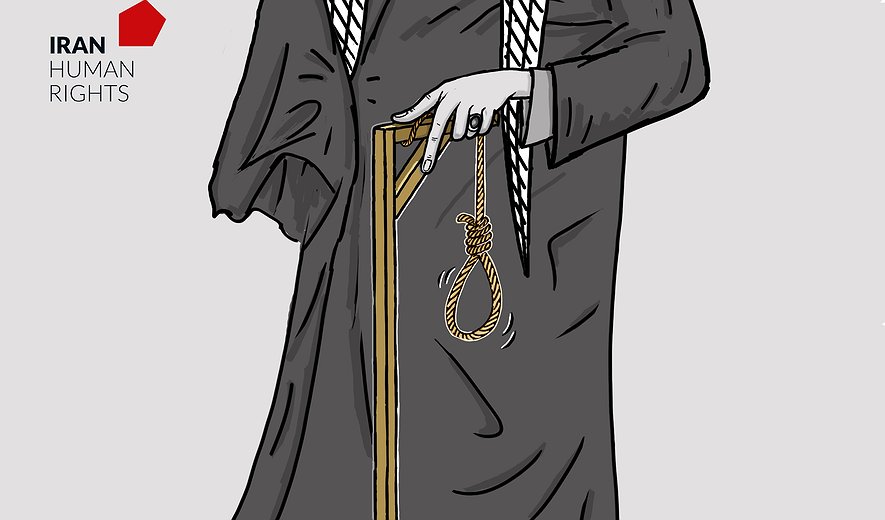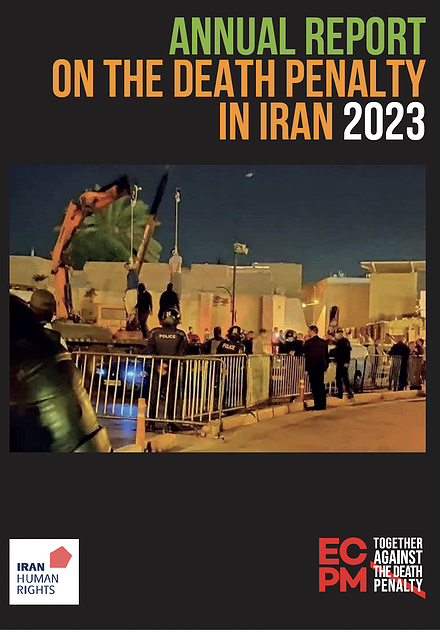Procedures of the Death Penalty in Iran

Iran Human Rights (IHR); May 3, 2021: After being sentenced to death, prisoners remain on death row in prison. It might take years, months and sometimes weeks from receiving the final verdict to the implementation of the death sentence. All death sentences must be approved by the Supreme Court, whose chief is appointed by the Head of Judiciary. In addition, the Head of Judiciary must authorise (estizan) all qisas executions (retribution-in-kind) prior to implementation.
According to Iranian law, the defendant’s lawyer must be informed of the scheduled execution 48 hours prior to its implementation. However, this is not always the case in practice, especially in political and security related cases. Prisoners are transferred to solitary confinement several days before their execution, where their hands are cuffed. The prisoner is normally granted a last visit with their family the day before the scheduled execution. IHR has published a short report based on witness interviews about death row conditions and the prisoners’ last hours which we encourage you to read.[1]
Methods of execution
The Iranian Penal Code prescribes several execution methods, including hanging, firing squads, crucifixion, and stoning. Hanging has been the main method of execution and the only method used between 2008 and 2020. In 2020, Hedayat Abdullahpour, a Kurdish political prisoner, was executed by firing squad.[2] Moreover, the recent directive issued by the Head of Judiciary in June 2019 gives a detailed description of how death sentences by hanging, stoning and crucifixion should be implemented.[3]
The majority of executions are carried out within prisons. In some facilities, there are dedicated rooms for executions, while in others they take place in the prison yard.
In murder cases where the defendant is sentenced to qisas, the plaintiff must be present at the scene of execution. Since Iranian law considers qisas as the right of the plaintiff, family members of the murder victim are encouraged to carry out the actual execution themselves. IHR has received several reports where the victim’s family members have actually conducted the execution. According to law, in death sentences, the presiding judge in the case, and in qisas cases, the judge as well as the plaintiff (the victim’s family) are required to be present at the execution.
Cranes are used when carrying out public executions. The prisoners are either pulled up or the object they are standing on is removed from beneath their feet. In this case, the prisoners die of suffocation and strangulation and it often takes several minutes until death occurs. As discussed later, the Human Rights Committee observed that public executions are contrary to the provisions of the ICCPR and that failure to respect Article 7 would inevitably render the execution arbitrary in nature and thus also in violation of Article 6 of the ICCPR.
No implemented stoning punishments have been reported since 2010. This is mainly due to the increasing international pressure in the decade prior, reaching its peak following the campaign to save Sakineh Ashtiani in 2010.[4]
References
[1] https://iranhr.net/en/articles/3512/
[2] https://iranhr.net/en/articles/4294/
[3] https://rc.majlis.ir/fa/law/show/1152670
[4] https://www.theguardian.com/world/sakineh-mohammadi-ashtiani

